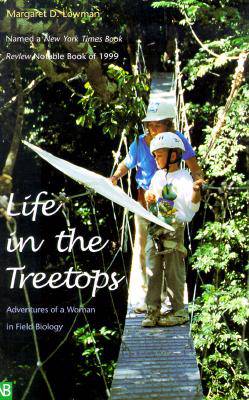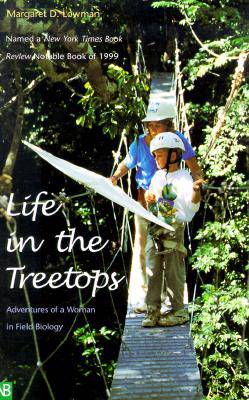
- Afhalen na 1 uur in een winkel met voorraad
- Gratis thuislevering in België vanaf € 30
- Ruim aanbod met 7 miljoen producten
- Afhalen na 1 uur in een winkel met voorraad
- Gratis thuislevering in België vanaf € 30
- Ruim aanbod met 7 miljoen producten
Zoeken
Omschrijving
Forest canopies have been characterized as one of the last biotic frontiers on Earth: tree crowns have been difficult to study scientifically because access to them has been so challenging. During the past two decades, however, methods for canopy access have greatly improved. In this book a pioneer canopy scientist describes the mysteries of the treetops--their inhabitants, flowers and fruits, growth and mortality, patterns of diversity, and plant and animal interactions. Margaret Lowman writes about different canopy access techniques in conjunction with the scientific hypotheses she was addressing while using each one. She also portrays the life of a field biologist from a woman's perspective: what it was like to juggle a demanding career with marriage, housewifery, motherhood, and single parenthood.
The chapters are organized chronologically, starting with Lowman's early days with ropes in Australia and progressing to the use of a cherry picker to access the canopies of eucalypt trees while she was pregnant, research by hot-air balloon in Africa, and building treetop walkways in the temperate forests of Massachusetts and in the tropical rain forests of Belize. The book also includes a lovely array of line drawings and halftones.
The chapters are organized chronologically, starting with Lowman's early days with ropes in Australia and progressing to the use of a cherry picker to access the canopies of eucalypt trees while she was pregnant, research by hot-air balloon in Africa, and building treetop walkways in the temperate forests of Massachusetts and in the tropical rain forests of Belize. The book also includes a lovely array of line drawings and halftones.
Specificaties
Betrokkenen
- Auteur(s):
- Uitgeverij:
Inhoud
- Aantal bladzijden:
- 240
- Taal:
- Engels
- Reeks:
Eigenschappen
- Productcode (EAN):
- 9780300084641
- Verschijningsdatum:
- 11/08/2000
- Uitvoering:
- Paperback
- Formaat:
- Trade paperback (VS)
- Afmetingen:
- 133 mm x 197 mm
- Gewicht:
- 190 g

Alleen bij Standaard Boekhandel
+ 43 punten op je klantenkaart van Standaard Boekhandel
Beoordelingen
We publiceren alleen reviews die voldoen aan de voorwaarden voor reviews. Bekijk onze voorwaarden voor reviews.











